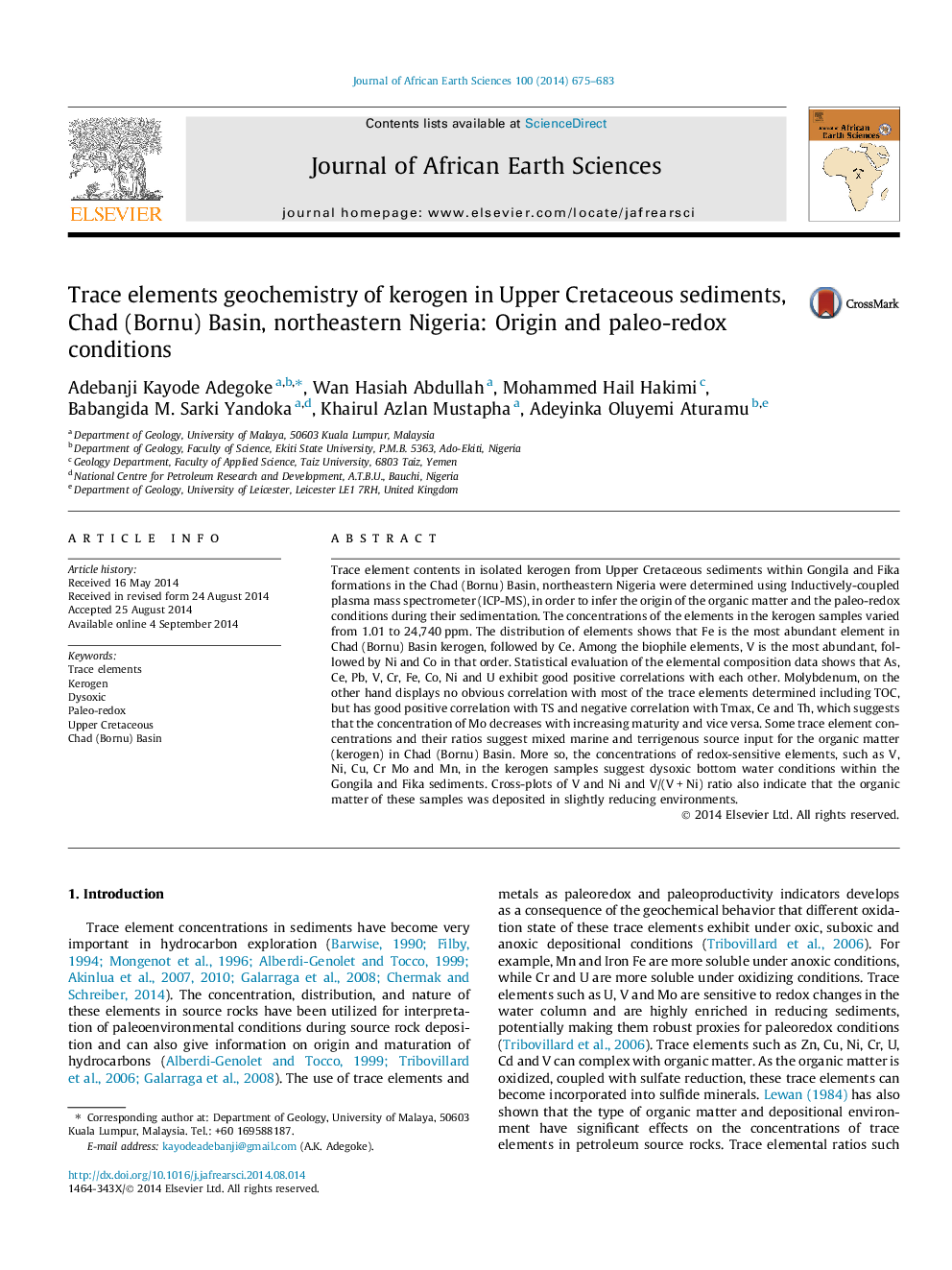| Article ID | Journal | Published Year | Pages | File Type |
|---|---|---|---|---|
| 6443818 | Journal of African Earth Sciences | 2014 | 9 Pages |
Abstract
Trace element contents in isolated kerogen from Upper Cretaceous sediments within Gongila and Fika formations in the Chad (Bornu) Basin, northeastern Nigeria were determined using Inductively-coupled plasma mass spectrometer (ICP-MS), in order to infer the origin of the organic matter and the paleo-redox conditions during their sedimentation. The concentrations of the elements in the kerogen samples varied from 1.01 to 24,740Â ppm. The distribution of elements shows that Fe is the most abundant element in Chad (Bornu) Basin kerogen, followed by Ce. Among the biophile elements, V is the most abundant, followed by Ni and Co in that order. Statistical evaluation of the elemental composition data shows that As, Ce, Pb, V, Cr, Fe, Co, Ni and U exhibit good positive correlations with each other. Molybdenum, on the other hand displays no obvious correlation with most of the trace elements determined including TOC, but has good positive correlation with TS and negative correlation with Tmax, Ce and Th, which suggests that the concentration of Mo decreases with increasing maturity and vice versa. Some trace element concentrations and their ratios suggest mixed marine and terrigenous source input for the organic matter (kerogen) in Chad (Bornu) Basin. More so, the concentrations of redox-sensitive elements, such as V, Ni, Cu, Cr Mo and Mn, in the kerogen samples suggest dysoxic bottom water conditions within the Gongila and Fika sediments. Cross-plots of V and Ni and V/(VÂ +Â Ni) ratio also indicate that the organic matter of these samples was deposited in slightly reducing environments.
Related Topics
Physical Sciences and Engineering
Earth and Planetary Sciences
Geology
Authors
Adebanji Kayode Adegoke, Wan Hasiah Abdullah, Mohammed Hail Hakimi, Babangida M. Sarki Yandoka, Khairul Azlan Mustapha, Adeyinka Oluyemi Aturamu,
